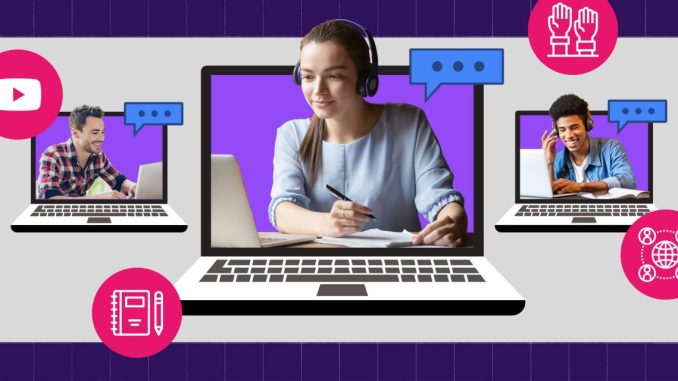
The Role of Technology in Modern Education
Technology, in today’s digital era, has changed schooling out of recognition. From interactive learning platforms to materials to digital resources and collaborative tools, education technology has utterly transformed the way students find information, engage with course materials and also communicate with educators. This article reflects on all aspects of technology in the modern school, exploring how it can enhance learning experiences and empower students to take control of their education.
Empower Students with Access to Information
One of the hallmarks of what technology does for students is giving them access to huge repositories of information and resources Online libraries, digital databases and e-books and educational websites give pupils all they need at their fingertips. This access to knowledge cuts through geographical boundaries and makes all sorts of topics and studies available. It lets students do research of their own on a range of different subjects, bringing the world into their classrooms beyond what they can find in textbooks.
Interactive Learning Platforms and Multimedia Tools
Technology has changed the way students experience course materials by replacing them with interactive learning platforms and multimedia tools. Virtual classrooms learning management systems (LMS) online course platforms allow interactive modules, video lectures, simulations, quizzes and collaborative projects. These tools address different types and indeed all kinds of learners — they encourage active participation by the student in a learning process that can be set at his own pace.
Digital Collaboration and Communication
Technology allows seamless collaboration and communication between students, teachers and others through media and communication tools. Discussion forums, group chats video conferencing, collaborative document editing enable students to work on projects together; they allow participants to ask questions or contribute without any time lag. These digital spaces encourage teamwork, independent thinking and analytical skills, all qualities vital for today’s workforce.
Personalized Learning and Personalized Technologiesadvancements
As new technology enters daily life, students can learn in an individual manner that suits them and their particular way of learning best. adaptive learning programs use algorithms to analyze students’ progress, strengths and weaknesses, then come through with learning tracks that are tailored just for each individual student. This personalized approach ensures that every student gets focused support, challenges suited to their ability levels, and opportunities for mastery learning.
Gamification and Interactive Learning Experiencesa kind of
Using techniques like this, gamification will take a student from learning with boredom and turn it into something fun and stimulating. Educational games, simulations and gamified learning platforms provide a lively and enjoyable environment in which to study. When gamification is combined with education, teachers can improve student involvement and achievement for more complex concepts while also creating from whatever surroundings they find themselves in a bright, cheerful place of learning.
Digital Literacy and 21st-Century Skillsschool
At the same time, it is not just a matter of presenting material. Technology in education helps students develop the digital tools and 21st-century skills which are necessary to succeed in today’s digital world. Students learn how to use digital tools, judge information found online, be effective in virtual collaboration and become accustomed to trends of technology that change. In today’s labor market and society as a whole these abilities — such as critical thinking, creativity, communication skills, working with others together on problems — are in high demand.
Addressing Challenges and Ethical Considerationsvirtual
However, while technology brings countless fortunes to education, it also throws at educators and policy-makers a number of challenges and ethical considerations. These include questions of digital inequality, access to technology, concerns about privacy, external stimuli that take students off the campus and into their own private cyberspaces, too much information flowing through your life every day–and no time to sift through It all for what you really need. Educators play a crucial role in enabling their charges to grow up as responsible digital citizens and ethical users of technology.
BRIDGING THE DIGITAL DIVIDE AND PROMOTING INCLUSION
A focus of any tie back that uses technology in education should be close the digital gulf as well as establish inclusion. It is essential to provide equal access to technology and Internet connectivity to all students, regardless of their economic background or location as far as possible. Political, educational institutions and technology providers may typically work together to bridge the digital gulf and gives opportunities for deprived communities. Future trends and innovations in education technology
In prospect, the future of technology in education will have ongoing innovation and new trends. This presents new challenges, such as artificial intelligence (AI), virtual reality (VR), augmented reality (AR), immersive learning environments, adaptive learning algorithms, learning analytics, blockchain technology to prove credentials on the internet securely and in real-time; and the Internet of Things (IoT) in education. These innovations could bring even greater benefits, such as enhancing the ability of people to learn, make education more individualized and foster educational results. Close
As an essential tool in modern education, technology has fundamentally changed how students learn, play and achieve in this digital age. By harnessing technology in a meaningful way, educators can make learning experiences better for their students and provide them with access to information and resources that may help them develop further. They can also promote collaboration and communication among peers, personalise learning trajectories suit each child unique learning need, cultivate skills necessary for the 21st century itself, and bridge the digital divide. Given technology education’s role, however, it requires strategic planning, consistent innovation, ethical considerations, and promoting digital literacythe next generation which is prepared to live in a quickly changing knowledge-based economy.